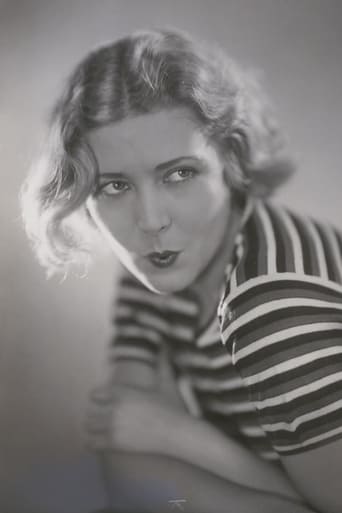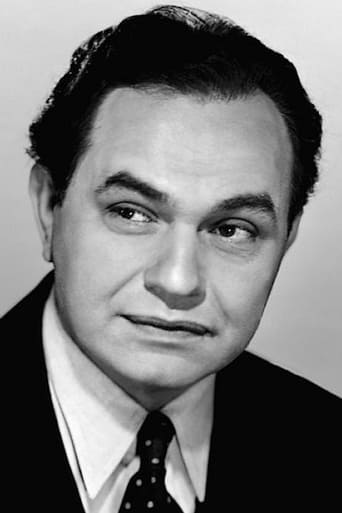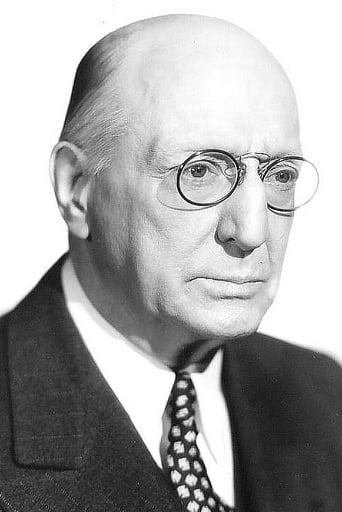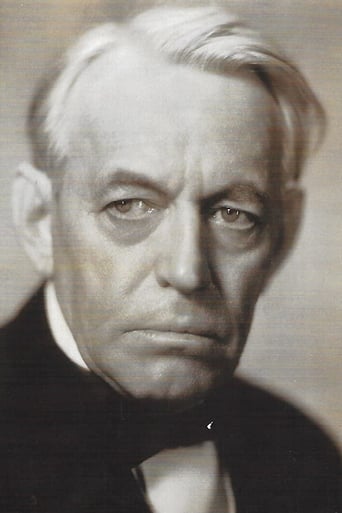Cubussoli
Very very predictable, including the post credit scene !!!
FeistyUpper
If you don't like this, we can't be friends.
CrawlerChunky
In truth, there is barely enough story here to make a film.
Loui Blair
It's a feast for the eyes. But what really makes this dramedy work is the acting.
boblipton
I knew this story first from the musical version, THE MOST HAPPY FELLER, with its great Frank Loesser score. Later, I saw the straight remake, THEY KNEW WHAT THEY WANTED, with Carole Lombard's best straight dramatic role. This version, directed by Victor Sjostrom, is very primitive. Oh, Vilma Banky, despite the claims that her sound acting was always bad, is quite good, although she's best in the sequences in which she says nothing or spends her time mumbling her lines; Edward G. Robinson's portrayal is so stereotypical that it seems almost comical for most of the movie, until the finale, when he plays it big and is very affecting; still, I thought it would have been better played by Henry Armetta -- until I realized that Armetta was still playing bit roles under a different name at this point.It's Robert Ames as Buck, the casual trouble-maker in this triangle, who is infuriating in this movie. He doesn't start any of the trouble. He doesn't care. He wanders in and out, and Ames plays him as a completely uninvolved drifter, which is completely appropriate, so why does everyone invest so much in him? Yes, he's good-looking in an unkempt way, but there's nothing noteworthy about him. We're supposed to imagine that Miss Banky has talked herself into marrying the man in the photograph, and he's simply taking advantage of the situation, but he's played as not a heel for sleeping with her, nor a good guy for leaving.So what are we left with? A bit of a curiosity, with the MGM staff still learning how to handle the sound equipment and a fine final two or three minutes from Robinson. It's not enough to make it a good movie, but since it's Edward G. Robinson, it's worth looking at once.
Stuart Greif
I'm sorry, but other than saying farewell to the very wonderful Vilma Banky, this is an awful movie. Edward G. Robinson's attempt at an Italian accent is appalling. Since when have Italians had problems with "V"? But this doesn't stop Edward G. from pronouncing "Valley" as "Walley" Well Wally to this Wally.Did anyone notice the large photo of Il Duce in the lounge. Benito hated the way Hollywood portrayed Italians and with good reason.The scene of washing Edward G. with all his pig squeals was nauseating at best.But full marks to Vilma B, a great lady.In summary, other than Vilma Banky, this movie was embarrassing to watch.Stuart
drednm
Vilma Banky was a famous silent film star, brought over from Hungary in the mid-20s by Sam Goldwyn. She was an instant star in films like THE EAGLE with Rudolph Valentino and THE WINNING OF BARBARA WORTH with Ronald Colman. Her talkie debut was in 1929 in THIS IS HEAVEN; it was a notorious flop. A LADY TO LOVE would be Banky's final American film and her second attempt at a talkie. And it's a very good film indeed.Banky plays a waitress in San Francisco who is spotted by an immigrant grape grower (Edward G. Robinson) who has come to the city to find a wife. He brings the waitress to Napa for an arranged marriage but she is immediately attracted to Robinson's foreman (Robert Ames). Although Robinson has fallen and broken is leg, the wedding takes place (she wants a home and things) but on their wedding night, Banky has a fling with Ames.Ames then goes away and leaves Banky with Robinson. She nestles into her newfound safe haven and takes care of Robinson. Over a period of a few months she discovers she has fallen in love with the doting Robinson, but then Ames returns and threatens to make trouble.Robinson (in his third talkie)is, as always, a total pro. And even with an Italian accent and a wild white white, he's a pleasure to watch. Ames is OK in the thankless part of the cad. Supporting players include Henry Armetta and George Davis as foolish workers, Anderson Lawler as the doctor, Lloyd Ingraham as the priest, and Richard Carle as the postman.But Banky is front and center here as Lena. Much was made of her failure in talkies because of her thick accent. After this film flopped she made a couple films in Europe and retired from the screen. But I was struck throughout this film at what a nice voice she had and how much her accent resembled that of Greta Garbo in ANNA Christie that same year. THIS IS HEAVEN is apparently a lost film so we may never be able to judge Banky's talkie debut. But her second effort is solid.The best scene in the film is where Banky attempts to give Robinson a bath while he's in bed (with a broken leg). It's a giddy and delightful scene, especially with his aversion to water.Banky was long married to silent star Rod La Rocque. He continued in talkies as a supporting player through the early 1940s.
Bruce-Karam
A beautiful story of love, that reminded me of Greta Garbo's "Anna Christie". I loved Vilma Bankee's voice and accent. I felt that the film was charming in it's "innocence" and simplicity, while dealing with a very complex issue. I hope that I may someday see it again.




